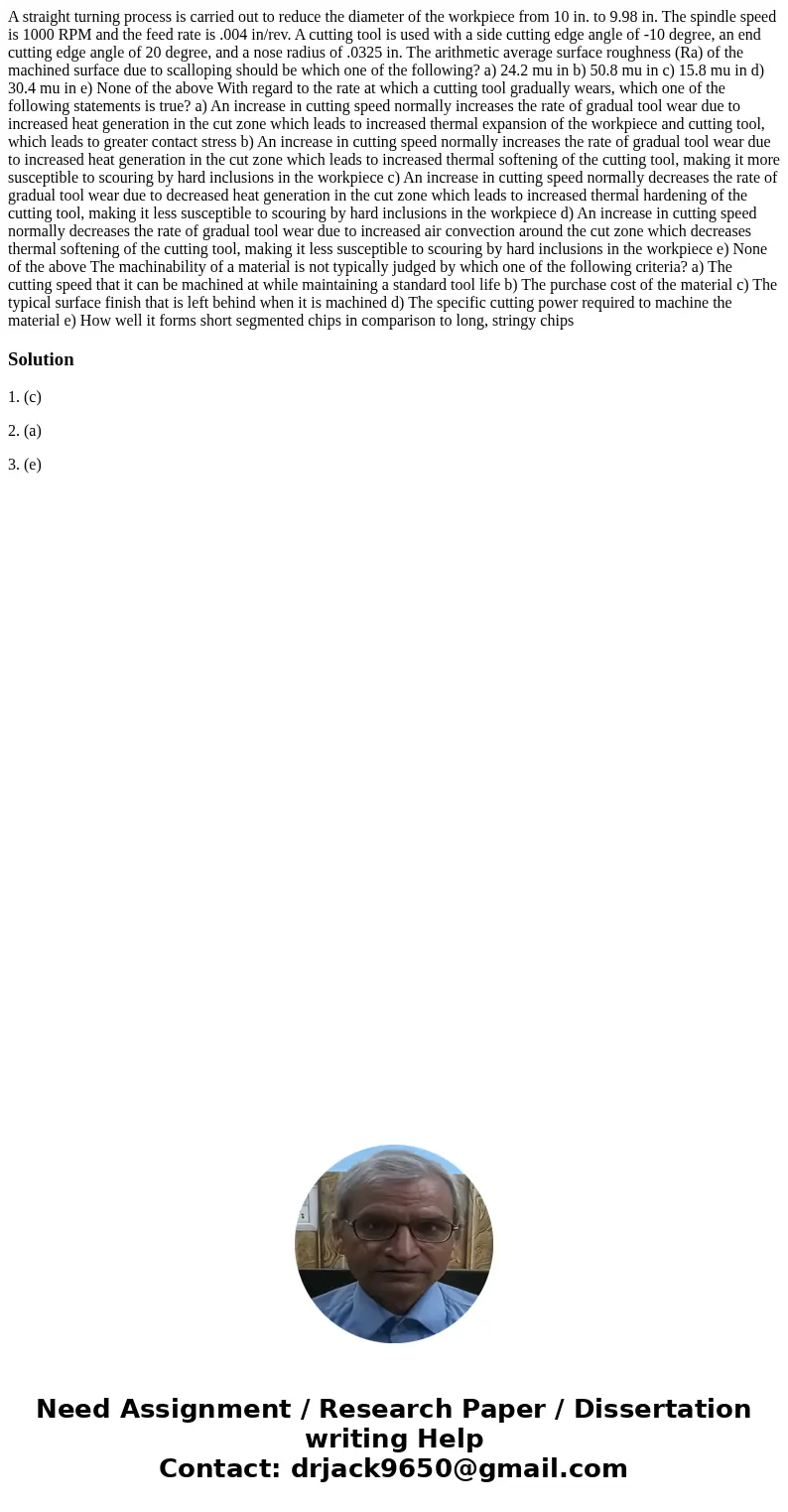A straight turning process is carried out to reduce the diam
A straight turning process is carried out to reduce the diameter of the workpiece from 10 in. to 9.98 in. The spindle speed is 1000 RPM and the feed rate is .004 in/rev. A cutting tool is used with a side cutting edge angle of -10 degree, an end cutting edge angle of 20 degree, and a nose radius of .0325 in. The arithmetic average surface roughness (Ra) of the machined surface due to scalloping should be which one of the following? a) 24.2 mu in b) 50.8 mu in c) 15.8 mu in d) 30.4 mu in e) None of the above With regard to the rate at which a cutting tool gradually wears, which one of the following statements is true? a) An increase in cutting speed normally increases the rate of gradual tool wear due to increased heat generation in the cut zone which leads to increased thermal expansion of the workpiece and cutting tool, which leads to greater contact stress b) An increase in cutting speed normally increases the rate of gradual tool wear due to increased heat generation in the cut zone which leads to increased thermal softening of the cutting tool, making it more susceptible to scouring by hard inclusions in the workpiece c) An increase in cutting speed normally decreases the rate of gradual tool wear due to decreased heat generation in the cut zone which leads to increased thermal hardening of the cutting tool, making it less susceptible to scouring by hard inclusions in the workpiece d) An increase in cutting speed normally decreases the rate of gradual tool wear due to increased air convection around the cut zone which decreases thermal softening of the cutting tool, making it less susceptible to scouring by hard inclusions in the workpiece e) None of the above The machinability of a material is not typically judged by which one of the following criteria? a) The cutting speed that it can be machined at while maintaining a standard tool life b) The purchase cost of the material c) The typical surface finish that is left behind when it is machined d) The specific cutting power required to machine the material e) How well it forms short segmented chips in comparison to long, stringy chips
Solution
1. (c)
2. (a)
3. (e)

 Homework Sourse
Homework Sourse